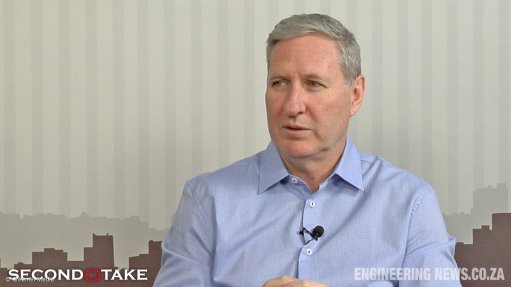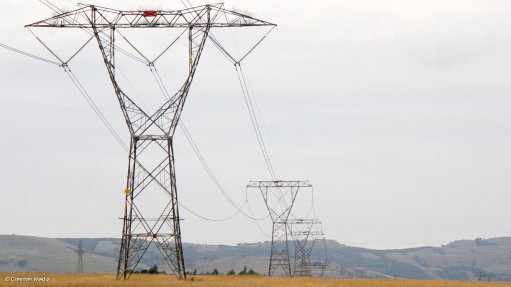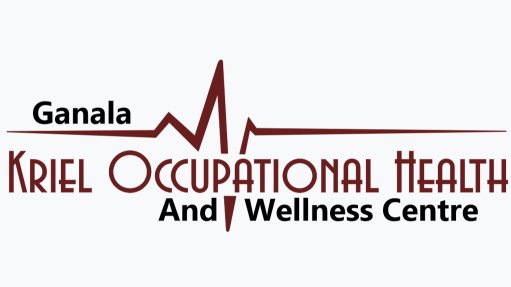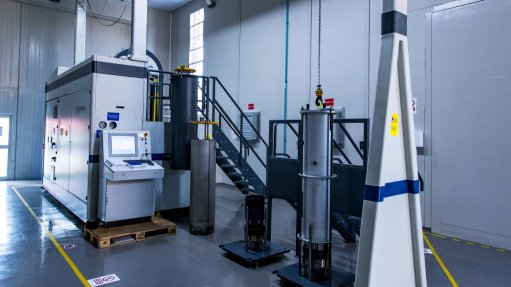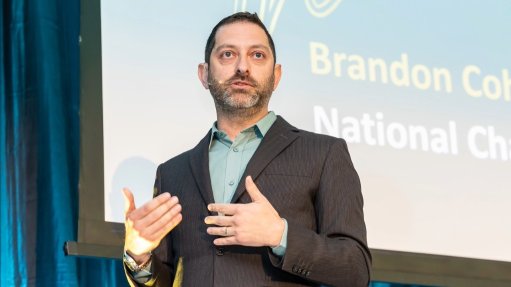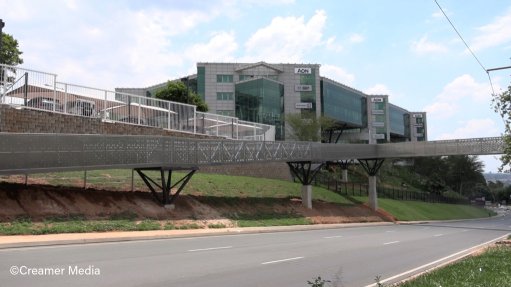Collective global climate efforts fall far short of what is needed to avoid 1.5 °C warming
Global research organisation the World Resources Institute (WRI) has said that, while many countries have made strides forward, their collective efforts still fall far short of what’s needed to avoid increasingly dangerous impacts and limit warming to 1.5 °C above preindustrial levels.
The UN’s latest assessment found that countries’ current policies put the world on course for 3.1 °C of warming by the end of the century, with greenhouse-gas (GHG) emissions holding steady at 57 metric gigatons of carbon dioxide equivalent (GtCO2e) in 2030 and 2035.
To limit the global temperature rise to 1.5 °C, these emissions must instead decline rapidly to 33 GtCO2e in 2030 and 25 GtCO2e in 2035, the WRI said.
However, this year presents a prime opportunity to change course, with countries set to put forward new nationally determined contributions (NDCs) ahead of COP30 in November.
The Paris Agreement requires that each successive NDC reflect a country’s “highest possible ambition”, as well as its “common but differentiated responsibilities and respective capabilities”, the WRI said.
“All eyes are now on governments to establish bold, new emissions-reduction targets for 2035, as well as strengthen their existing targets for 2030, in line with these core tenets. However, major emitters need to go further.”
Dividing the responsibility of achieving any global goal to individual countries is a complex, value-laden process, it added in its 'What Would Ambitious Climate Commitments Look Like for the World’s Top Emitters? It’s Complicated' report on April 22.
Various corners of the climate community tackle these questions differently, using a range of methods to develop near-term national benchmarks. These perspectives can yield distinct and, for some countries, contradictory results.
Modelled scenarios that limit warming to 1.5 °C at the lowest possible cost, such as those featured in reports from the Intergovernmental Panel on Climate Change (IPCC), are among the most common sources for establishing national benchmarks.
While some global climate models can now generate least-cost pathways for major emitters, others still lack country-level data. They instead simulate global or regional scenarios that must be downscaled to the national level.
However, a well-cited critique of relying solely on least-cost pathways to establish national benchmarks is that they ignore equity and fairness.
“Inequalities in incomes, energy use and GHG emissions among countries persist in IPCC scenarios that limit warming to 1.5 °C; however, because they prioritise economic efficiency, these least-cost pathways can also assign some developing countries disproportionate responsibility for reducing GHG emissions relative to their contributions to the climate crisis,” the WRI highlighted.
Fair-share perspectives attempt to address such limitations, such as by considering historical responsibility for total emissions, economic capacity and equality in per capita emissions, when determining each country’s contribution to limiting warming to 1.5 °C.
However, even defining equity and fairness across different fair-share approaches remains hotly contested, and such perspectives do not necessarily consider feasibility, it added.
Some countries’ fair-share contributions, for example, require GHG emissions to reach net zero or net negative by 2030, but such steep declines strain the bounds of feasibility even under the most favourable political conditions.
“In these select cases, approaches may allow for countries to compensate for what they cannot reduce domestically by financing emissions reductions beyond their borders,” the WRI said in its assessment of global climate commitments.
Meanwhile, other methods avoid global pathways entirely and instead rely on country-specific modelling.
These scenarios focus not on determining an individual nation’s contribution to the global goal of limiting warming to 1.5 °C, but rather on achieving that country’s pledge to reach net-zero emissions. They show how steeply emissions need to decline in 2030 and 2035 to stay on track to reach net zero, typically around mid-century for most countries, it noted.
Further, a related but simpler approach gaining traction among some governments is a “linear or steeper” trajectory to net-zero. This means that, if countries drew a straight line to their net-zero target, for example, zero GtCO2e in 2050, then their 2030 and 2035 targets should either be on this line or below it, reflecting a constant decline in GtCO2e each year.
“The devil is in the details, as the starting point governments select may significantly impact the steepness of the line; the steeper the line, the more ambitious the national benchmarks will be,” the WRI said.
Meanwhile, the bottom-up, feasibility-focused modelling method relies on country-specific modelling to determine what level of mitigation is feasible within a given nation, irrespective of a global limit on warming or that country’s commitment to reach net zero.
Often relying on more granular, country-specific data, these studies primarily estimate GHG emissions reductions that could be achieved if a government instituted a carbon price, championed a specific policy portfolio or deployed a particular suite of zero-carbon technologies.
Some of these modelling efforts also quantify mitigation that is possible if a country pursues a “just transition” or achieves national development priorities, alongside efforts to mitigate climate change.
These scenarios may end up charting pathways to net-zero emissions or show that deep GHG emissions cuts in line with 1.5 °C-aligned, least-cost pathways are feasible, but these end-goals are not inputs to the modelling.
China, the US, India, the EU, Brazil and Indonesia currently emit more than half of the world’s GHGs each year. Their near-term climate ambition, therefore, plays an outsized role in determining whether the world can reduce emissions enough to hold global temperature rise to 1.5 °C.
“Relying on the five approaches above, we assessed how ambitious these major emitters’ current mitigation targets are, as well as what strong 2030 and 2035 targets could look like for those that have not yet submitted their new NDCs.
“While most major emitters have set near-term targets that would be considered ambitious under at least one perspective, none features targets for 2030 and 2035 that are sufficiently ambitious across each of the five approaches assessed,” it noted.
Additionally, all six NDCs fall well short of what’s needed to keep the 1.5 °C limit within reach.
“According to the Paris Agreement, NDCs should reflect countries’ 'highest possible ambition', with each round putting forward stronger targets than the last.
“However, as this analysis confirms, there are still gaps between major emitters’ near-term targets and what’s urgently needed to keep the 1.5 °C limit within reach. For some countries, their 2030 and 2035 targets also fall short of the ambition required to stay on track to achieve their own net-zero pledges.”
Greater ambition from all countries, and especially these six major emitters, is paramount. In a moment of global economic uncertainty, the need for ambitious climate action that targets both inclusive economic prosperity and long-term stability is stronger than ever, the WRI said.
“The NDCs that governments submit this year, as well as the plans and finance they put in place to achieve them, will decide the fate of the Paris Agreement’s temperature goal.
“Major emitters must meet this moment by stepping up their ambition in their new round of NDCs.”
Article Enquiry
Email Article
Save Article
Feedback
To advertise email advertising@creamermedia.co.za or click here
Comments
Announcements
What's On
Subscribe to improve your user experience...
Option 1 (equivalent of R125 a month):
Receive a weekly copy of Creamer Media's Engineering News & Mining Weekly magazine
(print copy for those in South Africa and e-magazine for those outside of South Africa)
Receive daily email newsletters
Access to full search results
Access archive of magazine back copies
Access to Projects in Progress
Access to ONE Research Report of your choice in PDF format
Option 2 (equivalent of R375 a month):
All benefits from Option 1
PLUS
Access to Creamer Media's Research Channel Africa for ALL Research Reports, in PDF format, on various industrial and mining sectors
including Electricity; Water; Energy Transition; Hydrogen; Roads, Rail and Ports; Coal; Gold; Platinum; Battery Metals; etc.
Already a subscriber?
Forgotten your password?
Receive weekly copy of Creamer Media's Engineering News & Mining Weekly magazine (print copy for those in South Africa and e-magazine for those outside of South Africa)
➕
Recieve daily email newsletters
➕
Access to full search results
➕
Access archive of magazine back copies
➕
Access to Projects in Progress
➕
Access to ONE Research Report of your choice in PDF format
RESEARCH CHANNEL AFRICA
R4500 (equivalent of R375 a month)
SUBSCRIBEAll benefits from Option 1
➕
Access to Creamer Media's Research Channel Africa for ALL Research Reports on various industrial and mining sectors, in PDF format, including on:
Electricity
➕
Water
➕
Energy Transition
➕
Hydrogen
➕
Roads, Rail and Ports
➕
Coal
➕
Gold
➕
Platinum
➕
Battery Metals
➕
etc.
Receive all benefits from Option 1 or Option 2 delivered to numerous people at your company
➕
Multiple User names and Passwords for simultaneous log-ins
➕
Intranet integration access to all in your organisation







